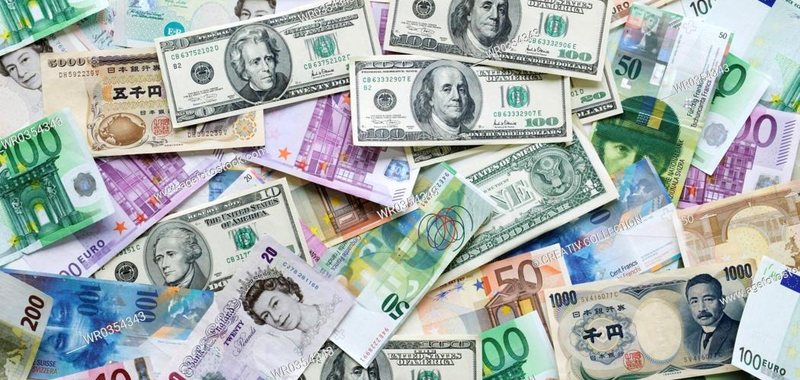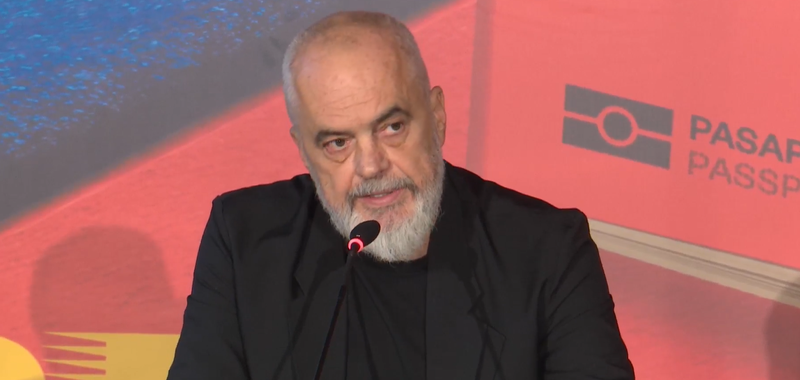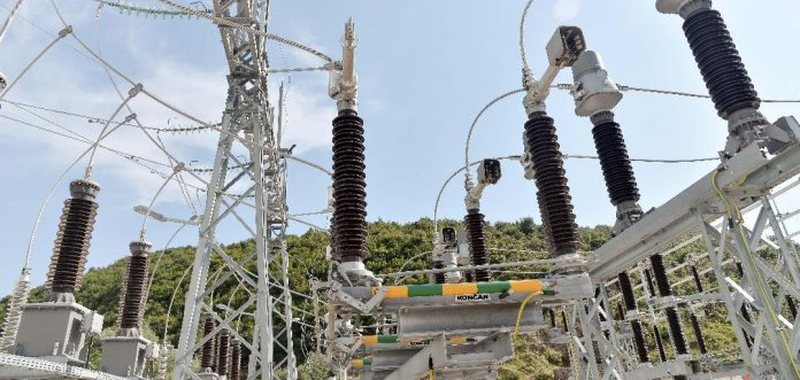What are the biggest economic risks for EBRD countries in Europe?!

Several Central European countries, including Hungary, Romania and Slovenia, have seen their economic prospects deteriorate as trade tariffs rise and Chinese competition increases, squeezing their exports. That is the conclusion of the latest outlook from the European Bank for Reconstruction and Development (EBRD). Growth in the 43 countries where the EBRD invests rose from 2.8% in 2024 to 3.3% in the first half of 2025.
After a stronger-than-expected first half of 2025, the organization is forecasting a significant slowdown in growth in the second half of the year across all of its regions. These include Central Asia, the Southern and Eastern Mediterranean, as well as Southeast Europe, Central Europe and the Baltic States. The current outlook excludes recently merged regions such as Sub-Saharan Africa and Iraq.
The main risks to growth include ongoing trade tensions and weakening global demand. However, the EBRD expects growth to accelerate again in 2026. According to its Regional Economic Outlook report, output is expected to grow by 3.1% this year before accelerating to 3.3% in 2026. Compared to its previous outlook, this translates into slightly better growth for 2025 and slightly worse for 2026.
Which countries' prospects have been hit hardest?
The countries where the EBRD has mainly lowered its forecast, compared to the one published in May 2025, mainly include its EU members in Central Europe and the Baltic states. Slovenia’s growth outlook was sharply lowered to 1.2% this year, with its economy expected to expand by 0.7%. The country saw a sharp decline in its exports to the US in the first half of the year, reaching 1% of GDP.
Hungary saw its outlook revised down by 1%, with growth of 0.5% forecast this year. Investment in the country has lagged behind, in part due to frozen European funds. This has been accompanied by higher financing costs. Hungary's output has also been hit by weakness emanating from Germany, where the manufacturing sector suffered a sharper contraction than previously estimated, the report said.
Latvia and Estonia also saw a downward revision, 0.9% and 0.8% respectively. The nine countries that make up the Central Europe and Baltic States region are expected to experience growth of 2.4% in 2025 and 2.7% in 2026.
European Commission concludes free trade agreement with Indonesia
These countries have limited growth prospects due to weaker-than-expected external demand, budget cuts and higher US tariffs that hurt their trade. These impacts could be partially offset by higher infrastructure investment, according to the EBRD report.
The EBRD's European countries with better prospects include Poland, whose forecast has been revised up by 0.2%, expecting growth of 2.5% this year. And Lithuania's outlook for 2026 has also been revised up by 0.6%.
Referring to these two countries, EBRD Chief Economist Beata Javorcik said: “You see that the countries that have performed well are diversified countries, larger economies like Poland, so less dependent on exports, countries that invested a lot, especially public investment.”
Poland's prospects were boosted by its infrastructure investments, including energy transition projects, as well as rail and defense works. Elsewhere, in Eastern Europe and the Caucasus, Ukraine's outlook was cut by 0.8% to 2.5% growth this year, due to the impact of continued Russian aggression and poor harvests.
Meanwhile, growth forecasts for the Southeastern EU, including Bulgaria, Greece and Romania, were cut by 0.3% this year and 0.5% for 2026. Lower exports are being offset by stronger investment in the region, with Romania in the weakest position. The country “will need to make full use of EU funds to stimulate growth,” the EBRD report said. The bank expects average GDP growth of 1.7% in 2025 and 1.9% in 2026 for the three countries in the Southeastern EU.
The main risks facing EBRD countries in Europe
Trade tensions are one of the pressure points for the region and especially for European countries, according to the report. Almost all EU exports to the US face a 15% tariff from the end of August 2025. This gave some economies a short-term boost in the first half of the year, but in the long run, the duties are expected to hurt production. "The impact of the tariffs has not yet materialized," Javorcik said.
Meanwhile, European countries are also facing the long-term risk of increasingly close trade competition with China. "China accounts for a quarter of global exports and exports more than Germany and the US combined," Javorcik said. She added that "China and our countries tend to export similar products," meaning the country is "slowly becoming a competitor to advanced European countries."
Over the past decade, China has increased exports of cars and batteries, goods that also account for significant parts of exports for some economies in the EBRD regions. However, European EBRD countries could also benefit in key export markets, particularly where the US wants to reduce its dependence on Chinese suppliers.
Meanwhile, fiscal weaknesses are also among the risks facing EBRD countries in the next two years. A number of economies are bearing the brunt of high costs to service their debts. For European countries like Hungary, the cost is around 4% of GDP; for Poland and Romania, it amounts to over 2% in 2025.
What can boost European economies?
"US trade policy can be a threat, but it can also be an opportunity," Javorcik explained.
She said that while higher US tariffs could hurt European countries' exports, it also presents an opportunity for Eastern European countries "to export products that previously came from China and which, due to much higher tariffs, have therefore become less competitive," she said.
The chief economist also highlighted the potential benefits of Chinese investment in European countries. “If we go back to the Draghi report published a year ago, the Draghi report suggested bringing Chinese investment, FDI, into car manufacturing and forcing technology transfer to European companies,” she said.
Meanwhile, in Europe, many see defense spending as a way to boost GDP, but whether increased defense spending can actually boost growth depends on three factors, according to Javorcik. She suggested that infrastructure spending is a key driver.
“If you devote a good portion of defense spending, not to core defense, but to everything else that is needed in infrastructure, energy security, IT security, these benefit the private sector and therefore stimulate growth.”
“The second choice you have is how much you import versus buying locally,” she continued, adding that the third most important thing is to invest in “developing the best defense system of tomorrow,” rather than the best defense systems of today.
"The higher the investment in research and development spending, the greater the stimulus for future economic growth," concluded the EBRD's chief economist.

Kosovo and Albania lead the region - EBRD predicts economic growth of 3.9% and 3.5%, respectively
The European Bank for Reconstruction and Development (EBRD) has published projections for the economies of its member countries this year and next. As for......

'Driverless Bus' - Is this the transportation of the future?
Madrid has a new temporary public vehicle: a fully autonomous electric minibus that aims to bring the mobility of the future closer and alleviate the driver......

How much are the major currencies exchanged today? – The British pound is on the rise!
The US dollar appears stable this morning as compared to the previous day there have been no significant fluctuations in the quote, being bought today at 82......

Turkey to buy gas from US - Signs 20-year deal with Mercuria
Turkey has signed a 20-year deal with trading company Mercuria to buy American liquefied natural gas, as US President Donald Trump urges Europe to stop......

Drinking water and waste/ Rama: National operators for management
Prime Minister Edi Rama today announced intervention in the management of the Tirana Water Supply, through the National Water Operator, which has been......

Preparing for the job market, the British Embassy funds professional courses for prisoners at Fier Penitentiary Institution
The British Embassy in Tirana is funding the establishment of vocational courses for prisoners. Special facilities have been built in Fier prison for an......

Properties are being sold 41.7% more expensive than in 2024/ BoS: An apartment was bought faster on the coast than in Tirana. Rents are also increasing
In the first half of this year, properties were sold 41.7% more expensive than in the first half of last year. According to the Financial Stability Report of......

150 million lek for transformer repairs/OSSH opens tender, aiming to improve network security
The High Voltage Directorate of the Albanian Public Distribution System (OSSH) has announced the opening of a tender for the repair of high and medium......





















